by Hal Standard with comments by Barry Carter
On April 6, 2008 I (Barry Carter) received the following email. My comments are in blue type:
Date: Sun, 06 Apr 2008 14:00:44 -0400
Subject: onions n ormus
Hey Barry,
We just pulled the last of our "little" green bunching onions....
Just thought you'd like to know ORMUS 'n onions do go together....
Cheers
Hal
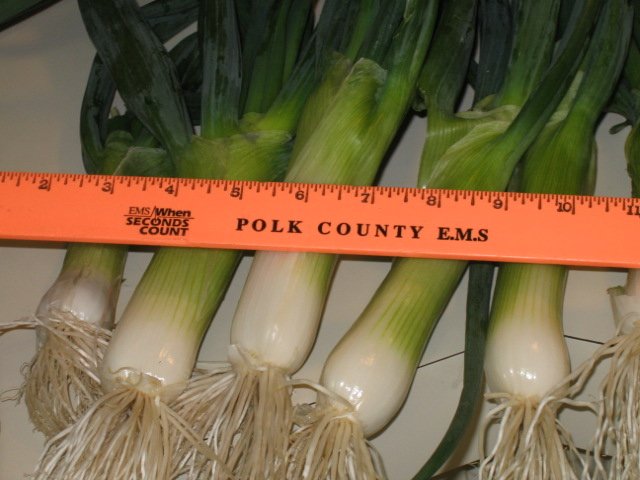
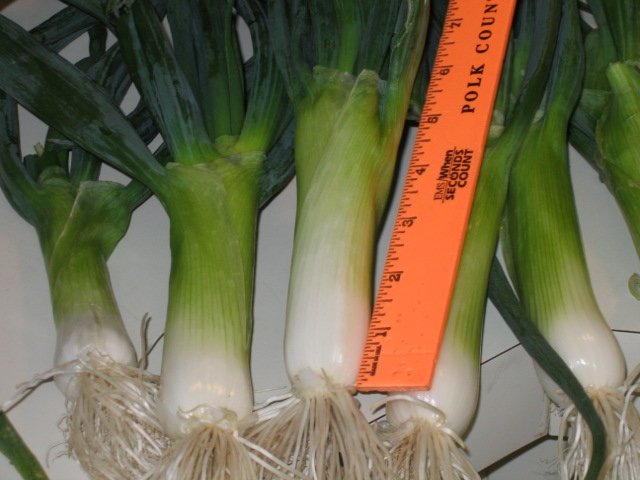
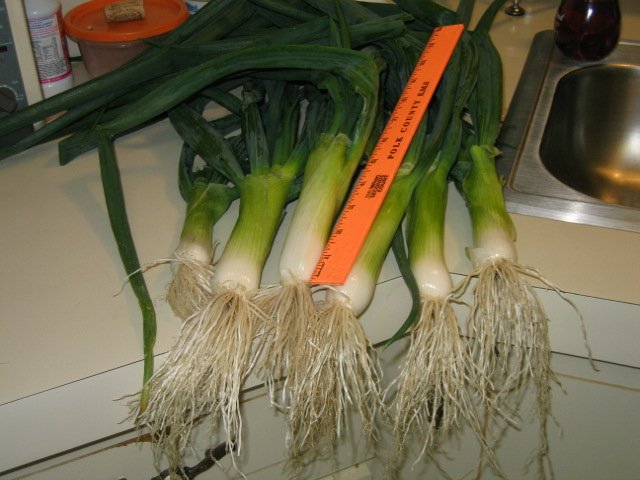
Realizing that these onions might not be around for much longer, I immediately wrote back to Hal asking him for more information and about five hours later he sent me the following reply:
Date: Sun, 06 Apr 2008 16:58:55 -0400
From: Hal
Subject: Re: onions n ormus
Good thing you emailed when you did, these are supper. But anyhoo after reading your email I went to the grocers and bought a bunch, and yep we'll plant this new bunch to put life back into them...
Our postal scale says about 2-1/4 pounds for the 6 onions we picked from our garden and we did adjust the scale for the container.
Hal also weighed six supermarket green onions and he said that they weighed "about 1/8th of a pound". I weighed six of the largest green onions I could find at the supermarket and they weighed 65.8 grams or 2.32 ounces. Two and a quarter pounds is 36 ounces. Divide 36 by 2.32 and you get 15.51. In other words, Hal's greem onions weighed over fifteen times as much as ordinary supermarket green onions.
The plants were grown in a raised bed, the bed mix start was a good Florida peat muck soil and we amened the soil with sand.
We do use compost from our yard and vegetable scrapes, we also use a micro nutrient fertilizer because here in Florida we get lots of rain so we've found the micro's leach fairly rapid, so we augment as needed.
We applied ormus from the first wash from precipitate that I make from Doug Borst's black sand, that he mixes and pulverizes. If you need that composition, phone him at 509-681-4110. (I got a 5 gal pail from him a while back.) I add a good cup of this first wash water to 5 gal of water and irrigate the bed with this twice a year. I have been doing this for two and a half years and, as time goes by, things are growing better and bigger.
Really if someone has a hydroponic system I'd recommend using Doug's pulverized sand in a leach bed.
I've experimented many different ways with Doug's mix and the mix from the Essene, I prefer Doug's.
I take 1/3 cup of Doug's pulverized mix (about 600 mesh and really paramagnetic) and add it to a good heaping cup of pink sea salt (Bolivian Rose) that I got from Saltworks. (The salt itself didn't produce much precipitate on it's own.) I put this mix of salt and rock powder in a stainless pot and get the pot bottom cherry red for a hour, beat it out of the pot, grind it up and burn it again like before. I do this at least 3 times (close to the upcoming full moon).
Then, when I need to precipitate, I take 2 tablespoons of this mix to one cup of NaOH, burn the hell out of it in my stainless pot for an hour, then after it cools beat it out of that pot into a larger stainless pot and gently boil it with about 1 gal of distilled water. After boiling it for 45 minutes I let it cool.
It takes me about a day to strain this thru 15 coffee filters then I filter with my hand vac - 1 micron, then take the pH down to 1. This takes 4 to 5 hours. I let the solution rest at least 30 min and then bring it back up to 10.2. I let this settle over night and on the next day I decant off the top water. Next, I put in distilled water and now the new top water turns milky and never clears. This has happened even with the sand from the Essene.
I have noticed lots of energetic radiation coming from the solution, you can feel the heat. Heck, the last batch I was titrating stopped my magnetic stirrer at 2/3rd's speed...
I hope this may answer some questions. Feel free to use pics if you wanna...
Cheers
Hal
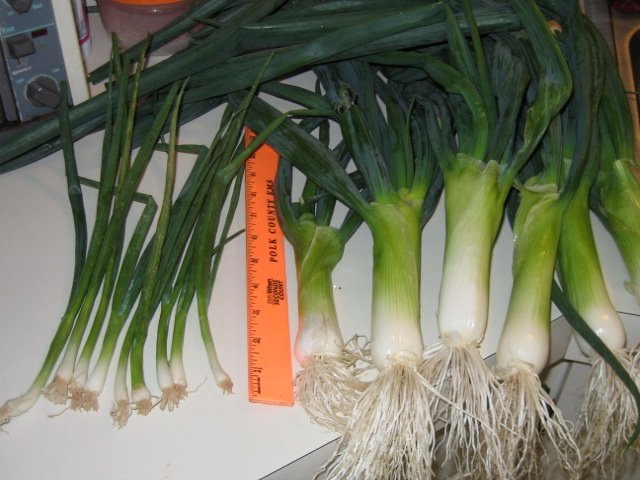
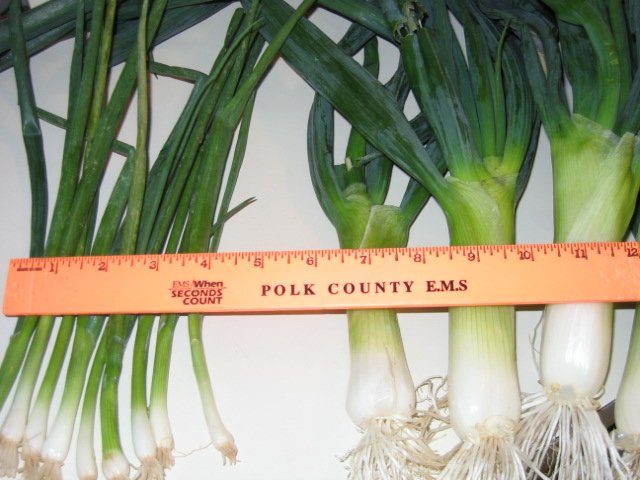
These two pictures compare the size of ordinary supermarket onions on the left to Hal's onions on the right.
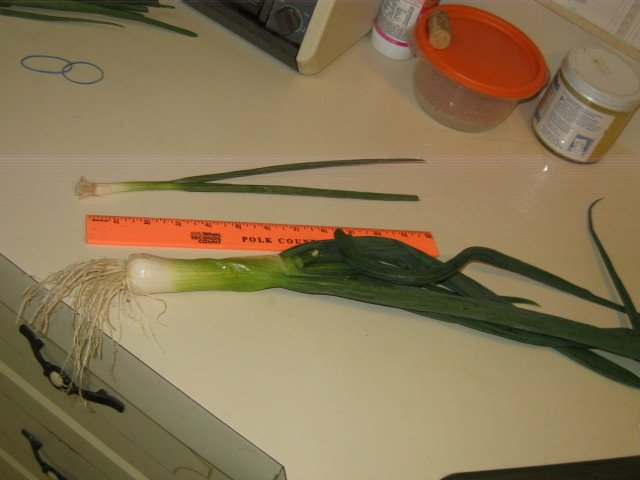
A comparison of length.
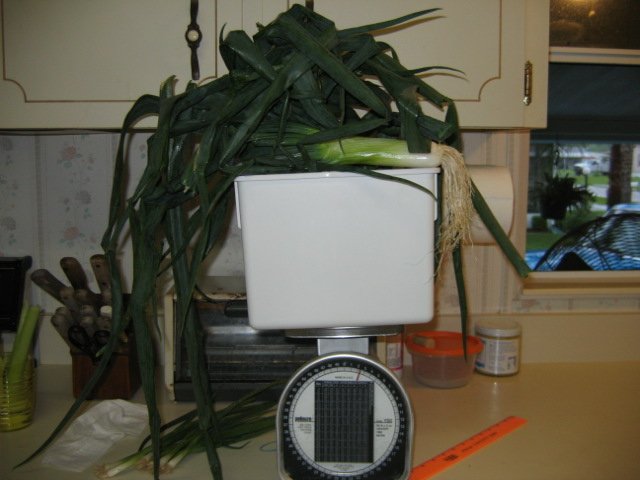
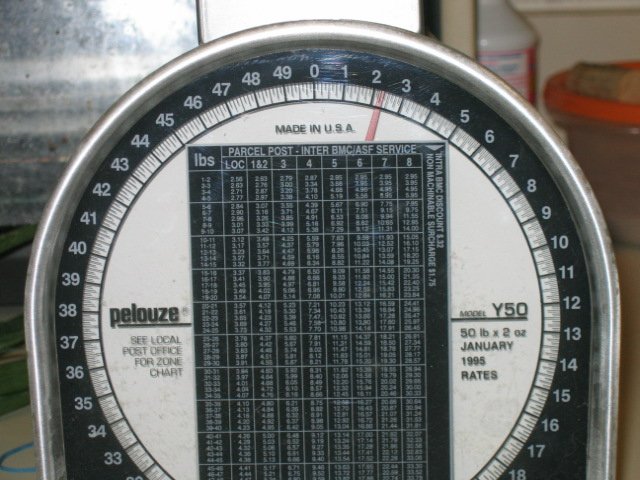
Weighing Hal's green onions.
"It's really not so much the taste per se, it's the content;
there's more life."
Date: Sun, 06 Apr 2008 14:00:44 -0400
Subject: onions n ormus
Hey Barry,
We just pulled the last of our "little" green bunching onions....
Just thought you'd like to know ORMUS 'n onions do go together....
Cheers
Hal



Realizing that these onions might not be around for much longer, I immediately wrote back to Hal asking him for more information and about five hours later he sent me the following reply:
Date: Sun, 06 Apr 2008 16:58:55 -0400
From: Hal
Subject: Re: onions n ormus
Good thing you emailed when you did, these are supper. But anyhoo after reading your email I went to the grocers and bought a bunch, and yep we'll plant this new bunch to put life back into them...
Our postal scale says about 2-1/4 pounds for the 6 onions we picked from our garden and we did adjust the scale for the container.
Hal also weighed six supermarket green onions and he said that they weighed "about 1/8th of a pound". I weighed six of the largest green onions I could find at the supermarket and they weighed 65.8 grams or 2.32 ounces. Two and a quarter pounds is 36 ounces. Divide 36 by 2.32 and you get 15.51. In other words, Hal's greem onions weighed over fifteen times as much as ordinary supermarket green onions.
The plants were grown in a raised bed, the bed mix start was a good Florida peat muck soil and we amened the soil with sand.
We do use compost from our yard and vegetable scrapes, we also use a micro nutrient fertilizer because here in Florida we get lots of rain so we've found the micro's leach fairly rapid, so we augment as needed.
We applied ormus from the first wash from precipitate that I make from Doug Borst's black sand, that he mixes and pulverizes. If you need that composition, phone him at 509-681-4110. (I got a 5 gal pail from him a while back.) I add a good cup of this first wash water to 5 gal of water and irrigate the bed with this twice a year. I have been doing this for two and a half years and, as time goes by, things are growing better and bigger.
Really if someone has a hydroponic system I'd recommend using Doug's pulverized sand in a leach bed.
I've experimented many different ways with Doug's mix and the mix from the Essene, I prefer Doug's.
I take 1/3 cup of Doug's pulverized mix (about 600 mesh and really paramagnetic) and add it to a good heaping cup of pink sea salt (Bolivian Rose) that I got from Saltworks. (The salt itself didn't produce much precipitate on it's own.) I put this mix of salt and rock powder in a stainless pot and get the pot bottom cherry red for a hour, beat it out of the pot, grind it up and burn it again like before. I do this at least 3 times (close to the upcoming full moon).
Then, when I need to precipitate, I take 2 tablespoons of this mix to one cup of NaOH, burn the hell out of it in my stainless pot for an hour, then after it cools beat it out of that pot into a larger stainless pot and gently boil it with about 1 gal of distilled water. After boiling it for 45 minutes I let it cool.
It takes me about a day to strain this thru 15 coffee filters then I filter with my hand vac - 1 micron, then take the pH down to 1. This takes 4 to 5 hours. I let the solution rest at least 30 min and then bring it back up to 10.2. I let this settle over night and on the next day I decant off the top water. Next, I put in distilled water and now the new top water turns milky and never clears. This has happened even with the sand from the Essene.
I have noticed lots of energetic radiation coming from the solution, you can feel the heat. Heck, the last batch I was titrating stopped my magnetic stirrer at 2/3rd's speed...
I hope this may answer some questions. Feel free to use pics if you wanna...
Cheers
Hal


These two pictures compare the size of ordinary supermarket onions on the left to Hal's onions on the right.

A comparison of length.


Weighing Hal's green onions.
I
called Hal and asked him a few questions to clarify more about the
nature of these green onions. Hal said that they were grown from seeds
purchased for this planting rather than from seeds collected from green
onions previously grown in Hal's garden.
I asked Hal and his wife to describe how these onions tasted in relation to how supermarket onions taste. Hal's wife said:
"They taste bigger...it's not quite as sweet, it's a little bit stronger onion taste, but it doesn't make it where it's not an eating onion."
Hal said:
I asked Hal and his wife to describe how these onions tasted in relation to how supermarket onions taste. Hal's wife said:
"They taste bigger...it's not quite as sweet, it's a little bit stronger onion taste, but it doesn't make it where it's not an eating onion."
Hal said: